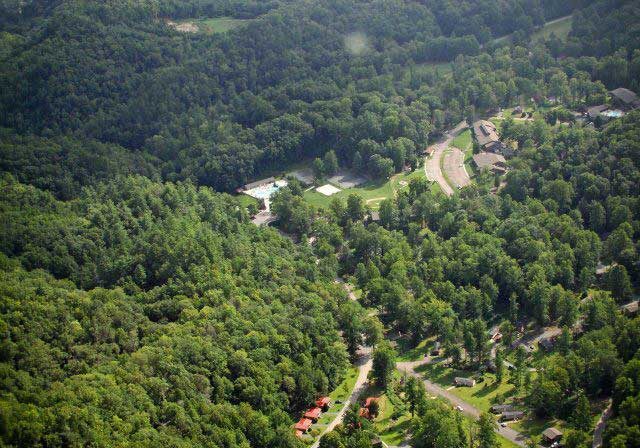GRAHAM COUNTY • NORTH CAROLINA
Unspoiled natural beauty around every curve.

Heritage & History
Settlers began entering the area of in the 1850's while it was still part of Cherokee County. The remoteness and lack of good roadways necessitated the creation of their own county government. In 1872 the area separated from Cherokee County to form Graham County. The dense undergrowth and rough terrain coupled with complete lack of transportation facilities caused the area to be one of the last in the state to attract industries. The one exception was logging. The Little Tennessee River was used to transport logs into Tennessee. The onslaught of Wold War I and then World War II brought an increase in demand for power for manufacturing of aluminium and the river which was used to transport logs was now harvested for power with the creation of four dams in Graham County.
Graham County Today
Even today, Graham County remains remote and sparsely populated. It is a sportsman's haven and visitors come to Graham County for its solitude and scenic splendor. The Indian trails and mountain roads once traversed by wagons and oxen carts are now explored by motorcycles, sportscars, and 4-wheel drive vehicles. The rivers that once were used to transport logs are now popular with trout fisherman and white water enthusiasts. The reservoirs created by the power producing dams have matured into pristine mountain lakes, with the majority of the shoreline undeveloped National Forest. Outdoor tourism is now the primary industry of the area.
The Towns of Graham County
Because of its mountainous terrain, Graham County was one of the last areas of the eastern United States to be settled by Europeans. Robbinsville was not incorporated until 1893, and it had only 200 residents in 1915.

Town of Robbinsville
In the 1840's, Colonel Will Thomas was among the first white settlers, opening a trading post in the area that would become Robbinsville. A post office was established in 1843 and listed as Cheoah Valley, changed to Fort Montgomery in 1849, and then changed to Robbinsville in 1874.
Robbinsville now has a population of about 2,000. There are traffic jams twice each year - for homecoming and the Christmas parade. The biggest celebration of the year is the annual 4th of July Heritage Festival.

Town of Lake Santeetlah
The area known as "Santeetlah" along the Cheoah River and just a few miles north of Robbinsville, was flooded after Santeetlah Dam was completed in 1928. In 1947, Kenneth Keyes exchanged land for a peninsula on the north side of Lake Santeetlah. In the early 1960's this property was developed into Thunderbird Mountain Resort and in 1989, it was incorporated into the Town of Lake Santeetlah. The town has approximately 40 households, mostly lakeside vacation homes.

Town of Fontana Dam
This town is based around Fontana Village. The village was formed to support the construction of Fontana Dam from 1942-1944 and was incorporated in 2011. The town's main employer is the Fontana Village Resort, which serves 100,000 visitors annually. It is also a respite for hikers on the Appalachian Trail, which crosses nearby Fontana Dam.
